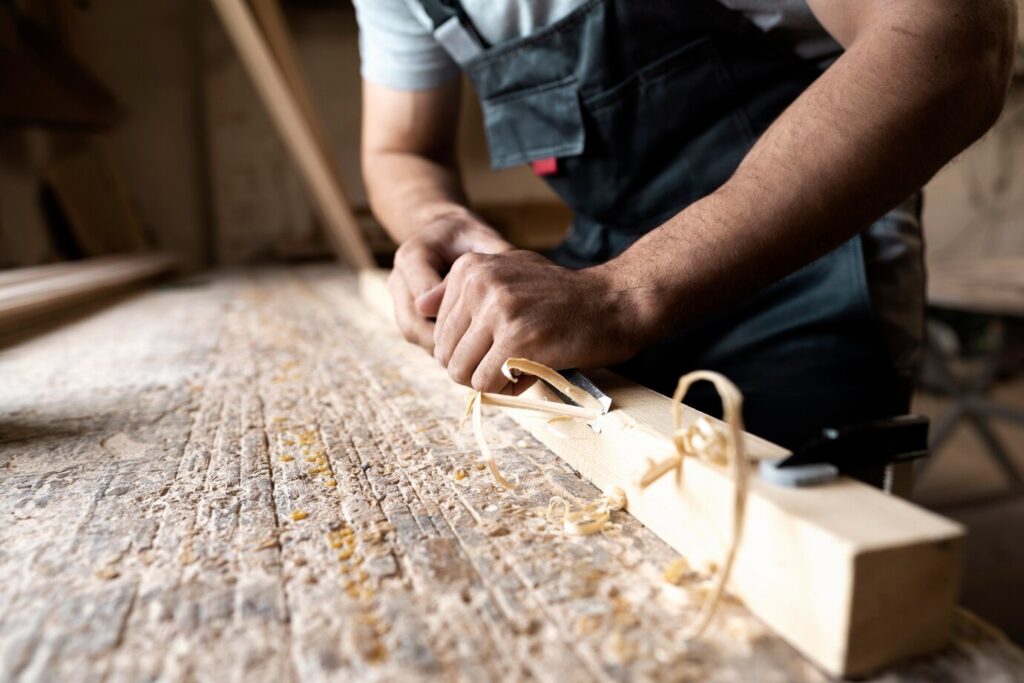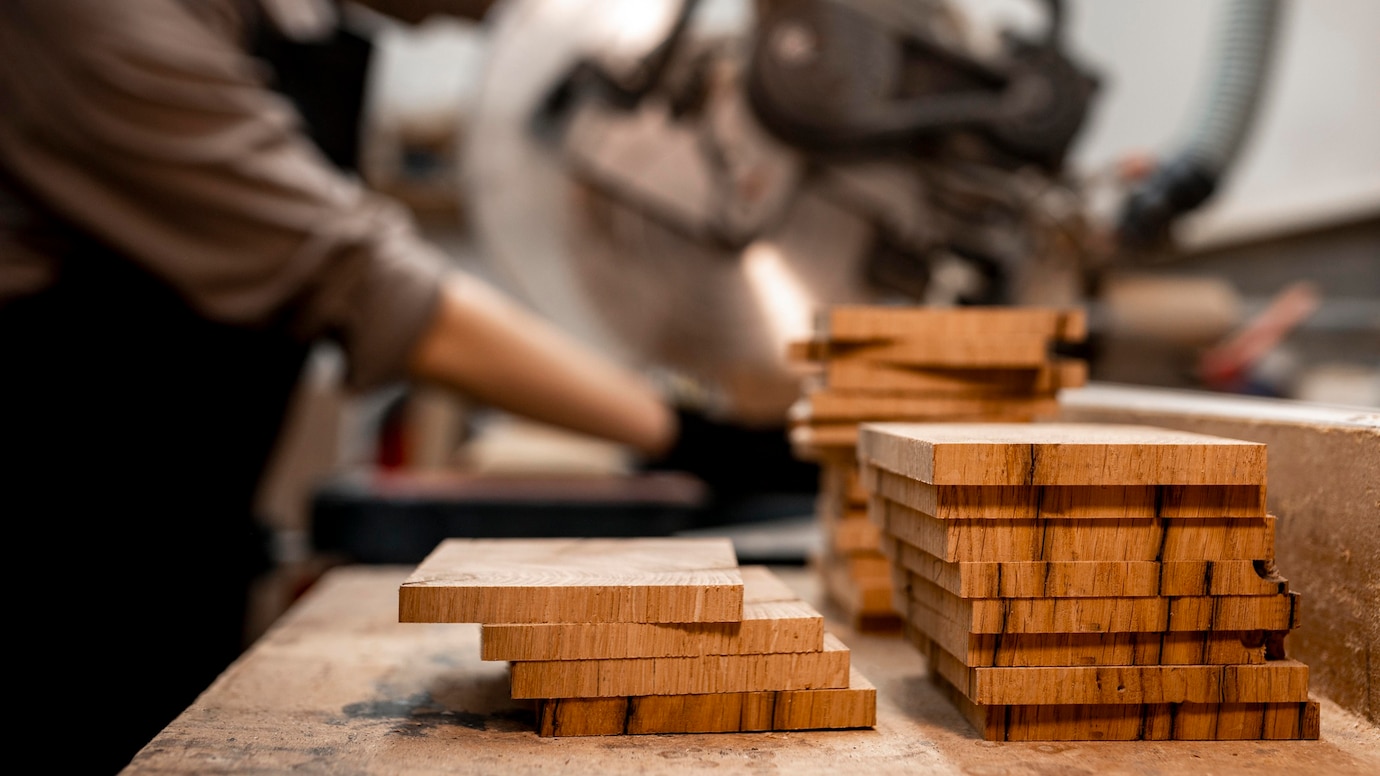The DIY & Crafts Blog

How to Price Your Woodworking Projects for Profit
So for woodworking entrepreneurs, one of the most common challenges is how to price their projects. Charge too little, and you leave money on the table or devalue your work. Set it too low, and you may have trouble luring customers.
Striking a balance between costs and profits ensures you remain competitive.
This guide explains the key pricing strategies, what to keep in mind and how to implement practices that ensure sustainable profit growth.
Why Proper Pricing Matters

Pricing your woodworking projects correctly is crucial for several reasons:
- Ensures profitability – You need to make enough money to sustain and grow your business.
- Reflects the value of your work – High-quality handmade items should be priced accordingly.
- Stay competitive – Your pricing must match market demand and keep your business viable.
- Covers costs and time – Materials, labour, and overhead costs must all be factored in.
- Boosts Business Growth – The right pricing lets you reinvest profits. You can use this money for better tools, marketing, and expanding your woodworking business.
Step 1: Understanding Your Costs
Before you set prices, you must calculate your expenses to avoid selling at a loss.
1.1 Material Costs
List all materials used in your project, including:
- Wood (oak, pine, walnut, reclaimed wood, etc.)
- Hardware (screws, hinges, nails, etc.)
- Finishes (paint, stain, varnish, glue, etc.)
- Sandpaper, brushes, and other consumables
Material costs can fluctuate, so it’s important to regularly update prices based on supplier costs.
Example Calculation:
- Wood: £15
- Screws and hinges: £5
- Varnish and sandpaper: £3
- Total Material Cost: £23
1.2 Labour Costs
Your time is valuable, and you should be paid fairly for your work. Calculate labour costs by:
- Estimating the hours spent on a project.
- Assigning an hourly rate for your labour.
Example:
- 3 hours spent on a project
- Hourly wage: £15
- Total Labour Cost: 3 × £15 = £45
If you plan to hire assistants or expand your workshop, factor in their wages as well.
1.3 Overhead Costs
Overhead includes indirect expenses related to your business, such as:
- Workshop rent or mortgage
- Electricity, heating, and lighting
- Tool maintenance and replacements
- Marketing and advertising
- Business Insurance
- Shipping and packaging materials
To find the overhead cost for each project, first estimate your monthly overhead expenses. Then, divide that amount by the number of projects you complete in a month.
Example:
- Monthly overhead: £500
- 50 projects made per month
- Overhead per project: £500 ÷ 50 = £10
As your business grows, overhead costs usually rise. So, it’s important to adjust your prices.
Step 2: Applying a Pricing Formula

Once you have your costs, use a simple pricing formula to ensure profitability.
Basic Pricing Formula
(MaterialCosts+LabourCosts+OverheadCosts)×Markup=SellingPrice(Material Costs + Labour Costs + Overhead Costs) × Markup = Selling Price
The markup accounts for profit, business growth, and unforeseen expenses.
Example Calculation:
- Material costs: £23
- Labour costs: £45
- Overhead costs: £10
- Markup: 2.5 (to ensure a good profit margin)
(£23+£45+£10)×2.5=£195(£23 + £45 + £10) × 2.5 = £195
This means the ideal selling price for the project is £195.
Some woodworkers use a higher markup, especially for unique or custom-made pieces.
Step 3: Understanding Market-Based Pricing
While cost-based pricing is essential, market demand also plays a role. Research similar products online and in local markets to determine competitive pricing.
How to Research Market Prices
- Check Online Marketplaces: Search for similar items on Etsy, eBay, and Amazon Handmade.
- Look at Local Competition: Visit craft fairs and stores selling handmade wood products.
- Consider Customer Willingness to Pay: Higher perceived value justifies higher prices.
If competitors sell similar products for £180-£220, your price of £195 is within a competitive range.
Step 4: Adding Value to Justify Higher Prices
To price higher, differentiate your products with added value:
- Customisation: Offer engraving or personalisation for an extra fee.
- Premium Materials: Use exotic woods or high-quality finishes.
- Superior Craftsmanship: Attention to detail and durability command higher prices.
- Branding and Packaging: Elegant branding enhances perceived value.
- Limited Edition Products: Scarcity can increase demand and justify a premium price.
Handmade wooden items that tell a story or reflect a personal touch tend to sell at higher prices.
Step 5: Adjusting for Profit Margins
Your pricing should leave room for profit after covering costs. A healthy profit margin is usually 30-50% over your total costs.
Profit Margin Calculation
Profit Margin = (Selling Price – Total Cost) ÷ Selling Price × 100
Using our previous example:
(£195−£78)÷£195×100=60(£195 – £78) ÷ £195 × 100 = 60% profit margin
This ensures a strong return on investment while keeping the price reasonable.
To grow your business, you might need to boost margins. This can help cover extra costs, such as marketing and hiring new staff.
Common Pricing Mistakes to Avoid
- Underpricing Your Work – Many beginners set prices too low and struggle to cover expenses.
- Ignoring Market Trends – Pricing too high in a low-demand market can lead to slow sales.
- Not Accounting for Labour Costs – Time is money; your effort deserves fair compensation.
- Failing to Factor in Shipping Costs – If selling online, include packaging and shipping fees.
- Inconsistent Pricing – Be transparent and avoid sudden price fluctuations.
- Overlooking Seasonal Pricing Trends – Some wooden products sell better during holidays, allowing you to adjust prices accordingly.
Conclusion

Setting the right price for your woodworking projects is essential for success. Think of it as crafting a sturdy table; the foundation matters. To find a balance between competitiveness and sustainability, calculate costs, check the market, and set fair profit margins.
Don’t overlook the artistry of branding and marketing. A beautifully packaged item, complete with professional photography, can demand a premium. In contrast, an unbranded piece may sit quietly in the shadows.
With your polished pricing strategy in place, it’s time to showcase your creations! What pricing hurdles have you encountered? We’re eager to hear your experiences in the comments!









